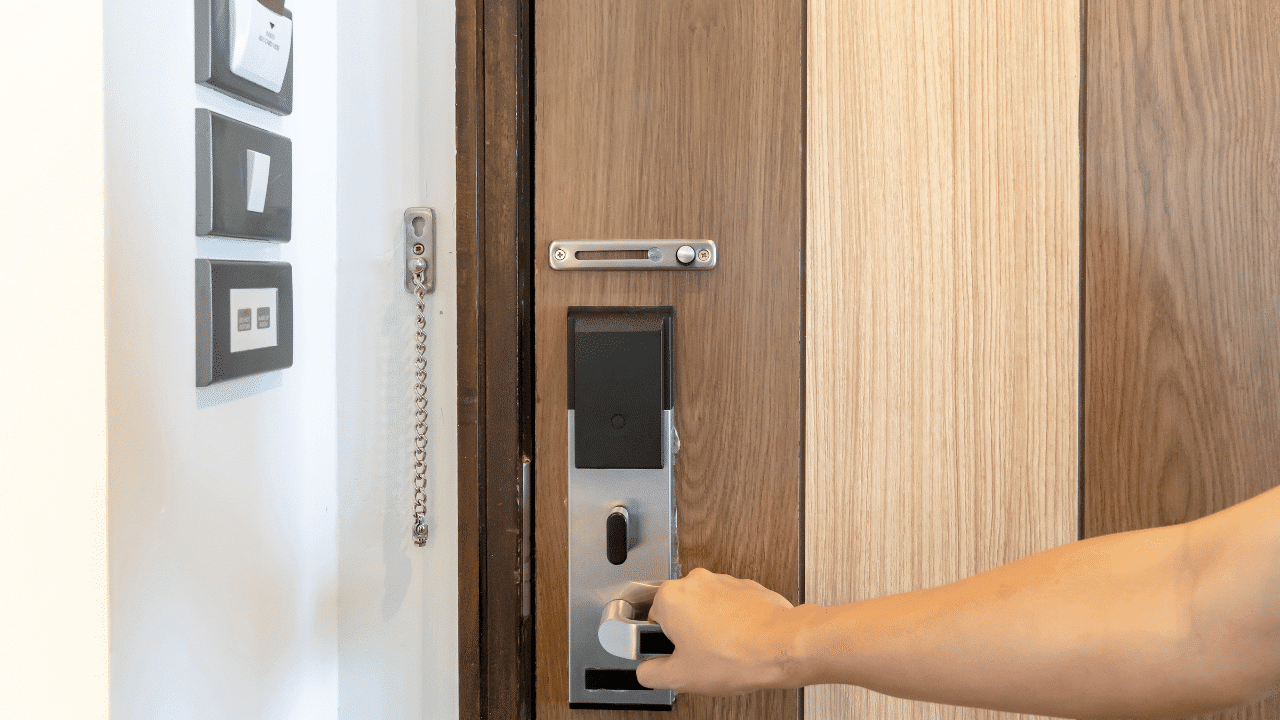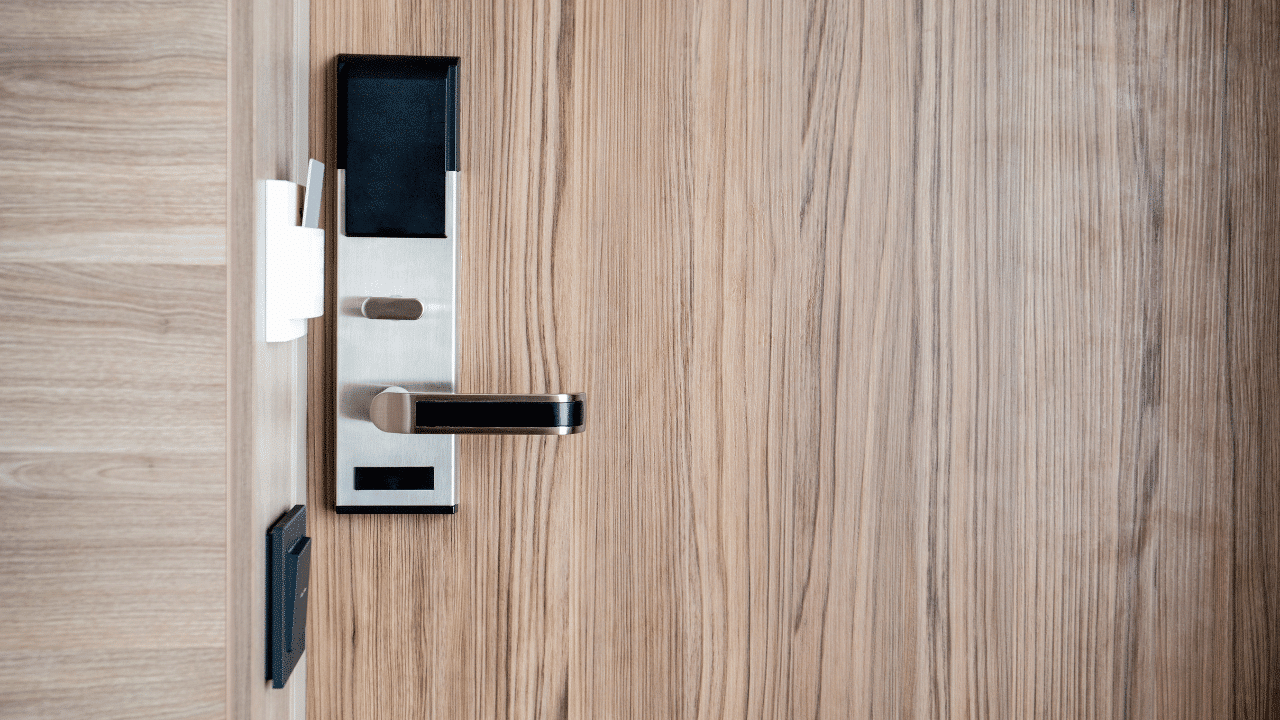Last Updated on September 15, 2023 by Pro Handyman Australia – Editorial Team
Smart locks have swiftly become a pivotal feature of the contemporary smart home. Beyond their advanced functionalities, such as enabling door unlocking via passcodes or smartphones, they set the first impression for visitors with their aesthetic appeal. Balancing functionality with design might seem a demanding task for something as simple as a lock, but 2023 offers an array of stellar products to satisfy both criteria.
The Essence of a Smart Lock: At its core, a smart lock is much more than just a means to secure a door. It offers homeowners the luxury of convenience, merging technology and security. Imagine unlocking your door remotely for a friend or receiving alerts on access. The world of smart locks opens up such possibilities and more.
Key Considerations for Your Purchase
As you navigate the vast market of smart locks this year, it’s crucial to comprehend both their functionalities and aesthetic values. This guide aims to illuminate the essentials of smart locks, offering insights into what they are, pivotal aspects to consider during your purchase, and the expansive features that make them a coveted household gadget in 2023.
Smart Locks Explained
At a fundamental level, a smart lock operates similarly to a conventional lock. Its differentiation lies in its Wi-Fi capability, which enables integration with a dedicated app. This technological advancement facilitates functionalities such as remote access, auto-unlocking through geo-location (like automatic unlocking when you approach your driveway), and the generation of digital passkeys for family, friends, or other visitors.
Technology Behind Smart Locks

- Wi-Fi Connections: Smart locks predominantly use Wi-Fi to execute user commands for locking or unlocking. This seamless integration with dedicated apps also allows them to work in tandem with renowned smart home ecosystems like Google, Alexa, and Apple HomeKit. Connecting your smart lock with a digital assistant not only streamlines operations but also seamlessly incorporates it into predefined home routines. For instance, triggering a ‘goodnight’ routine can ensure that while your home assistant dims the lights and updates you on tomorrow’s weather, your doors are also securely locked. It’s worth noting that frequent remote access might deplete Wi-Fi-enabled smart lock batteries faster, so occasional battery replacements might be necessary. Prospective buyers should look into user reviews to gauge battery longevity.
- Z-Wave: Z-Wave operates as a low-energy radio signal, bearing resemblance to Bluetooth. It’s renowned for robust encryption and a more stable signal transmission. To integrate a Z-Wave smart lock, a hub is usually required to establish a connection to your Wi-Fi. A standout feature of Z-Wave is its efficient bandwidth usage, resulting in minimized interference from other smart devices.
Guidelines for Smart Lock Selection
The majority of smart locks act as direct substitutes for traditional deadbolts, making their installation straightforward. The in-built Wi-Fi in most models ensures compatibility with platforms like Amazon Alexa, Google Nest, Apple Home Kit, or potentially all of them. For Z-Wave users, compatible locks are also readily available.
Selecting the ideal smart lock begins by ensuring its compatibility with your existing smart home infrastructure. If you’re relatively new to smart home technology, you might need additional components like a hub, bridge, or another Wi-Fi-enabled device. Certain smart lock packages include these, while others rely on pre-existing smart home interfaces, such as Amazon Echo Show, Google Nest hub, Apple HomePod, or Apple TV. A meticulous examination of specifications is vital to ascertain compatibility.
Budgeting for Smart Locks
While conventional deadbolts might come at a meager cost, smart locks, given their advanced tech integrations, naturally command a higher price point. Esteemed brands typically price their smart locks around $200-300. While more economical options exist, it’s imperative to ensure their security robustness against potential breaches.
Trusted Smart Lock Brands
Renowned companies like Schlage, Yale, and Kwikset dominate the smart lock market, offering a blend of reliability and security. While an array of lesser-known brands exists, especially at more affordable price points, entrusting your home’s security to reputed and well-reviewed products is always recommended.
Smart Locks for Renters
Given rental agreements often limit modifications to the property, renters should lean towards smart locks that do not alter existing deadbolt configurations. This ensures the landlord’s access remains unhindered while granting the tenant remote capabilities. Wyze Smart Lock and August Smart Lock stand out as the top choices for renters.
Installation Procedures

Smart lock installation typically follows one of two paths:
- Full Replacement: This entails a complete overhaul of your existing deadbolt setup, inclusive of the bolt, exterior, and interior components. With many smart locks offering step-by-step guides through their apps, the procedure is generally uncomplicated.
- Partial Replacement: This approach targets the interior thumb lever and plate, retaining the external deadbolt and face. This method is particularly beneficial for those with uniformly keyed locks, wanting to avoid rekeying. The installation, requiring merely a screwdriver, is relatively simpler. If uncertainties persist, professional locksmiths can assist.
Unlocking Mechanisms
- Keypad or Touchscreen: Some smart locks come equipped with a keypad or touchscreen for code input. However, there’s a potential security risk: burglars could analyze keypad wear or fingerprints to deduce the passcode. To counteract this, certain locks, like the Weiser Premis, introduce a random code input before the actual pin.
- Biometrics: This refers to utilizing biological characteristics, like fingerprints or eye scans, as access points. Though more common in commercial spaces, fingerprint scanners are gaining traction in home setups.
- Smartphone Controls: A prevalent method involves using a dedicated app on your smartphone to control the lock, ideal for temporary access provisions.
- Geofencing: This technology employs your phone’s precise location to auto-lock or unlock doors as you cross predefined geographic boundaries.
- Physical Key Options: While some smart locks provide emergency keys, others entirely discard traditional keyholes, making them immune to picking.
- Tap to Unlock: Models like the Schlage Encode allow your phone to function as a keyfob, initiating a digital handshake upon proximity, granting access after secure phone authentication.
Can Smart Locks Fit Any Door?
Smart locks, much like conventional door knobs and deadbolts, are usually designed with standard dimensions. If your residence is relatively modern or has newer doors, it’s highly likely that a smart lock will seamlessly integrate. However, if your home is more traditional or the doors are older, there might be compatibility issues.
While certain lock brands offer adaptor kits to assist with unique door sizes, those with atypical doors should ensure accurate measurements and verify the company’s return policy. For those unable to replace the entire deadbolt mechanism due to door constraints, considering a smart lock kit, which installs over the rear of your existing latch, is recommended. Moreover, advancements in smart lock technology have enabled the emergence of integrated systems, combining smart locks with video doorbells for an enhanced security experience.
Deciding Between Keeping or Replacing Your Deadbolt
Several smart locks allow homeowners to retain their current deadbolt. These “retrofit” options are ideal for individuals such as renters who might not want a complete overhaul or the hassle of new keys. Retrofit locks, such as the August Wi-Fi Smart Lock and the Kwikset Kevo Convert, clamp over existing deadbolt hardware. Such designs maintain the integrity of your door’s existing security while introducing smart features.
Conversely, homeowners can opt to replace the existing deadbolt entirely. Many smart locks, like the Schlage Sense Bluetooth Deadbolt and the Yale Assure SL Touchscreen Deadbolt, adopt this approach. Such locks might require a tad more effort during installation, but they remain manageable even for first-time DIY enthusiasts. Prior to installation, it’s crucial to ensure your door’s compatibility with smart locks. For those opting for this method, it’s also a wise practice to photograph the original setup to aid in potential reversal during installation challenges.
Choosing a Communication Protocol: Bluetooth, Z-Wave, or Wi-Fi (Additional Information for what suits your door)

A smart lock’s communication with other smart devices and your smartphone is pivotal. Typically, this communication hinges on one of three prevalent protocols: Bluetooth, Z-Wave, or Wi-Fi. Each has its advantages and drawbacks.
Bluetooth
Popular smart locks like the August Smart Lock and the Kwikset Kevo predominantly use Bluetooth due to its energy efficiency. Given that deadbolts don’t connect to a continuous power source, it’s essential for the lock’s battery to have an extended life. Bluetooth ensures this by being less draining than Wi-Fi, often lasting a year or more.
However, Bluetooth has its limitations in range, approximately 300 feet under optimal conditions. Structural factors within homes can further reduce this range. While sufficient for in-home control, if you stray too far, the connection may be lost.
Z-Wave: Extended Range and Integration
Smart locks leveraging Z-Wave technology, unlike their Bluetooth counterparts, require a Z-Wave compatible hub for communication. This hub interprets the Z-Wave signal for your router, facilitating remote access to the lock. Z-Wave’s range stands at approximately 120 feet, but this can be extended via other Z-Wave devices acting as range boosters. The signal can be relayed up to four times, maximizing the potential range to around 600 feet, although obstacles such as walls may hinder this.
Certain Z-Wave locks may not have proprietary apps, necessitating users to rely on the hub’s application for lock controls. This could be viewed as a limitation or a simplification, depending on individual preferences. One downside to Z-Wave is the additional hub requirement to facilitate Wi-Fi communication. Nevertheless, it provides comprehensive integration capabilities, especially if you’re using platforms like SmartThings.
Wi-Fi: Comprehensive Control and Features
Wi-Fi, while an optional feature in some smart locks, offers enhanced connectivity and remote control. Some locks might require external modules to bridge the Bluetooth-to-Wi-Fi connection. However, more recent iterations of smart locks have incorporated built-in Wi-Fi functionality. Despite the convenience, Wi-Fi connectivity may drain battery life faster than Bluetooth. Thus, staying equipped with spare batteries is advisable.
Wi-Fi connectivity empowers users with features like remote locking or unlocking, user management, and accessing real-time activity logs. Additionally, internet-enabled smart locks typically offer expansive integrations, including compatibility with digital assistants like Google Assistant or Amazon Alexa.
Conclusion
In the modern era, ensuring the safety of our homes goes beyond traditional locks and keys. Smart locks, with their technological prowess, have surfaced as a pivotal component of contemporary home security. As we’ve delved into the smart lock buying guide, it’s evident that choosing the ideal smart lock isn’t merely about aesthetics or brand names. It requires a nuanced understanding of door compatibility, communication protocols, and the broader ecosystem of smart devices in one’s home. Bluetooth, Z-Wave, and Wi-Fi each offer distinct advantages, catering to varying user needs. As the realm of smart home technology continues to expand, staying informed and updated is key. For potential buyers, it’s essential to evaluate individual requirements, home infrastructure, and desired features before committing to a purchase. Ultimately, the right smart lock seamlessly merges convenience, security, and innovation, reinforcing the sanctity of one’s personal space in today’s interconnected world.
